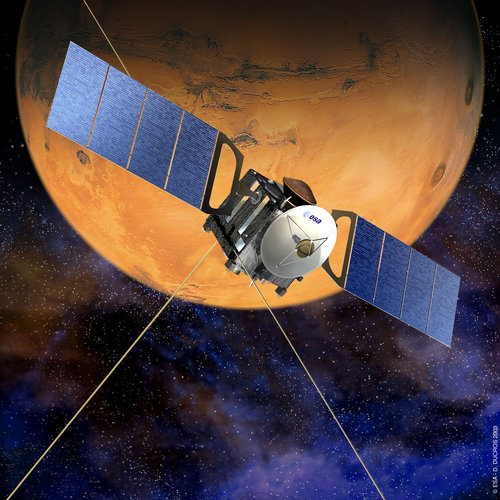
Copernical Team
NASA-French Satellite Spots Large-Scale River Waves for First Time
 The SWOT mission captured the flood waves, which stretched from 47 to 166 miles long, as they traveled down rivers in Montana, Texas, and Georgia.
In a first, researchers from NASA and Virginia Tech used satellite data to measure the height and speed of potentially hazardous flood waves traveling down U.S. rivers. The three waves they tracked were likely caused by extreme rainfall and by a
The SWOT mission captured the flood waves, which stretched from 47 to 166 miles long, as they traveled down rivers in Montana, Texas, and Georgia.
In a first, researchers from NASA and Virginia Tech used satellite data to measure the height and speed of potentially hazardous flood waves traveling down U.S. rivers. The three waves they tracked were likely caused by extreme rainfall and by a Deep mantle carbon flow influences diamond formation and craton stability
 A recent study led by scientists at the Guangzhou Institute of Geochemistry of the Chinese Academy of Sciences (GIG-CAS), in collaboration with international partners, uncovers how deeply subducted carbonates reshape the Earth's mantle chemistry, influencing both diamond formation and the evolution of cratonic lithosphere.
Using high-pressure experiments that simulate depths from 250 to 66
A recent study led by scientists at the Guangzhou Institute of Geochemistry of the Chinese Academy of Sciences (GIG-CAS), in collaboration with international partners, uncovers how deeply subducted carbonates reshape the Earth's mantle chemistry, influencing both diamond formation and the evolution of cratonic lithosphere.
Using high-pressure experiments that simulate depths from 250 to 66 Citizen scientists asked to identify clouds in satellite data for climate research
 CloudCatcher, a citizen science program developed by STFC RAL Space, is inviting the public to help improve the accuracy of cloud detection in satellite imagery. The project plays a vital role in enhancing how scientists measure Earth's surface temperatures from space by verifying when clouds obstruct the satellite's view.
This latest version of CloudCatcher builds on the success of a 2020
CloudCatcher, a citizen science program developed by STFC RAL Space, is inviting the public to help improve the accuracy of cloud detection in satellite imagery. The project plays a vital role in enhancing how scientists measure Earth's surface temperatures from space by verifying when clouds obstruct the satellite's view.
This latest version of CloudCatcher builds on the success of a 2020 Microsoft AI weather forecast faster, cheaper, truer: study
 Microsoft has developed an artificial intelligence (AI) model that beats current forecasting methods in tracking air quality, weather patterns, and climate-addled tropical storms, according to findings published Wednesday.
Dubbed Aurora, the new system - which has not been commercialised - generated 10-day weather forecasts and predicted hurricane trajectories more accurately and faster th
Microsoft has developed an artificial intelligence (AI) model that beats current forecasting methods in tracking air quality, weather patterns, and climate-addled tropical storms, according to findings published Wednesday.
Dubbed Aurora, the new system - which has not been commercialised - generated 10-day weather forecasts and predicted hurricane trajectories more accurately and faster th Week in images: 19-23 May 2025

Week in images: 19-23 May 2025
Discover our week through the lens
Earth from Space: Alakol, the multicoloured lake
 Image:
Lake Alakol in eastern Kazakhstan is featured in this radar image captured by Copernicus Sentinel-1.
Image:
Lake Alakol in eastern Kazakhstan is featured in this radar image captured by Copernicus Sentinel-1. 5 Bitcoin Alternatives Worth Considering in 2025
 From being dismissed as internet magic money to becoming a household name, Bitcoin is now the poster child of cryptocurrency. However, Bitcoin isn't the only player in the game anymore. A number of other coins are stepping up, offering real use cases, better tech, and in some cases, more growth potential.
From being dismissed as internet magic money to becoming a household name, Bitcoin is now the poster child of cryptocurrency. However, Bitcoin isn't the only player in the game anymore. A number of other coins are stepping up, offering real use cases, better tech, and in some cases, more growth potential. SpaceX mega-rocket Starship 9 cleared for launch following earlier mission failures
 The Federal Aviation Administration has approved the launch of SpaceX's Starship 9 after two mission mishaps idled the program for months.
"The FAA conducted a comprehensive safety review of the SpaceX Starship Flight 8 mishap and determined that the company has satisfactorily addressed the causes of the mishap, and, therefore, the Starship vehicle can return to flight," the FAA said in
The Federal Aviation Administration has approved the launch of SpaceX's Starship 9 after two mission mishaps idled the program for months.
"The FAA conducted a comprehensive safety review of the SpaceX Starship Flight 8 mishap and determined that the company has satisfactorily addressed the causes of the mishap, and, therefore, the Starship vehicle can return to flight," the FAA said in NASA's Dragonfly mission sets sights on Titan's mysteries
This request seems a bit unusual, so we need to confirm that you're human. Please press and hold the button until it turns completely green. Thank you for your cooperation!
Press and hold the button
If you believe this is an error, please contact our support team.
185.132.36.159 : 711feb19-636d-405c-b9d5-40ca0b96
Mars Express updates software, potentially extending spacecraft lifetime

Mars Express mission operators at ESOC successfully sent a new software patch that would allow the spacecraft to operate in its third decade.

































